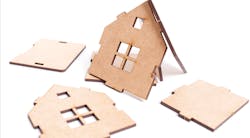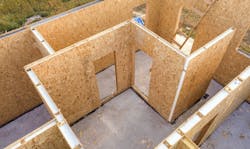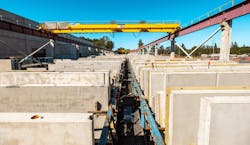Is Off-Site Construction Losing Steam?
Since the start of the pandemic, home builders anticipated that their construction methods would change from traditional stick-building to some sort of industrialized or off-site construction method over a five-year period, according to research by Home Innovation Research Labs, a market research, consulting, product testing, and third-party certification agency that’s an independent subsidiary of the National Association of Home Builders.
But in Home Innovation’s most recent survey of home builders on the topic—data that's been collected annually since 2019—those perceptions have held steady in some areas and decreased slightly in others, according to Ed Hudson, director of Home Innovation’s market research division.
RELATED
- 5 Ways Home Builders Can Maintain Quality Despite Supply Chain Issues
- Precut Framing Field Test: Does This Off-Site Solution Earn Its Keep?
- Your Road Map to Off-Site Construction and Modular Homes
Not a Steady Trajectory: What Does the Future of Construction Look Like?
The survey, which polls more than 300 home builders, prioritizes what future construction methods will look like, Hudson says.. “Between 2019 and 2021, there tended to be across-the-board interest in offsite and alternative construction methods,” he says. “But between 2021 and 2022, there appears to be a flattening or decline [in that interest],” but not to pre-pandemic levels. “Overall, these construction methods have accelerated.”
One of the alternatives to stick-building that still shows growth is engineered roof trusses. Builders responded that their interest in using this method within the next five years was 15% in 2019, and it steadily increased between 2020 and 2022 to 23%.
“During the pandemic, constructability and cycle times just got out of hand, so builders were looking for ways to reduce the skill and time on the construction site,” Hudson says. “There’s a significant upside to that.”
For turnkey framing services (in which a builder buys materials and installation labor from the same company) just 7% of survey respondents in 2019n said they anticipated any changes. But by 2021, that interest had grown to 19%, after which it declined slightly to 14% in the latest survey.
During the pandemic, the driver for turnkey framing was supply-chain disruption. When it became difficult for builders to buy framing materials at a good price, builders seemed to be more willing to turn over that responsibility to someone who buys at a higher volume and who can manage that effort,” Hudson says. “Since then, interest has backed off after lumber prices have come down considerably.”
RELATED
- Marketing Industrialized Construction to Consumers
- The Great Convergence, Part 1: Why the Move to Off-Site Construction Now?
- Housing, Industrialized: Designing for Off-Site
Other Off-Site Construction and Factory-Built Trends
As for other factory-built or off-site methods, here’s what the trends indicate:
- Open wall panels: Builder interest in using open wall panels went from 9% in the 2019 survey to a high of 16% in 2020 and then dropped to 12% in the latest survey.
- Pre-cut framing: In 2019, pre-cut framing packages stood at 12% and, after peaking at 16% in 2020, fell to 11% in the latest survey. “I think pre-cut framing packages, once they get established and are more available in every market, will be more popular,” Hudson says.
- Modular: Builder interest in modular construction was 7% in 2019, after peaking at 13% in 2021, and fell to 10% in the latest survey. “Demand was so high for housing that builders were looking for ways to produce more without having to hire more people,” Hudson says. “When there aren't as many homes being built, due to higher interest rates, and supply-chain issues aren’t as pressing, there’s less urgent need for modular.”
- Floor cassettes: Interest in panelized, preassembled floors was at 7% in 2019 and peaked at 13% in 2020 before falling to 9% in 2022.
- Closed wall panels: Factory-built closed wall panels have held steady at 9% since 2019, dipping slightly to 8% in the most recent survey.
- Precast panels: Builder interest in precast concrete floor, wall, or roof panels went from 7% in the 2019 survey up to 12% in 2021—when the price of framing lumber was at its peak—before reverting to 7% in the most recent survey.
Buck Wargo is a freelance journalist in Las Vegas covering a variety of real estate topics.


